Explore the Bambu Lab H2D's performance and features, and gain insights from a professional user. Read the full review now!
< Back to articles
It's fair to say that the Bambu Lab H2D was probably the most eagerly awaited new 3D printer release in recent history. The meteoric growth of Bambu Lab as a new player in the additive manufacturing market has been nothing short of spectacular, and in recent weeks, they now appear to be the largest 3D printing company in the world, surpassing the 'old-guard' of Stratasys and 3D Systems.
Until now the Bambu Lab ecosystem of printers has been received and reviewed extremely favorably. The X1C, their flagship model until now, was named as one of Time Magazine's best inventions of 2022. The cheaper, P1S/P machines was raved about by digital heavyweights Tom's Hardware, and TechRadar, and the enterprise level X1E was given a near perfect score by 3D Printing Industry (the highest score they've ever given).
Indeed, although I was a sceptic for far longer than most, as of January 2025, my company Printpool has moved exclusively to Bambu Lab machines for our FDM production. Until then we relied on a mixture of UltiMaker, Raise 3D and Markforged hardware for our extrusion tech, and only bought our first Bambu Lab P1S in October 2023.
I quickly found it almost irritating how hopelessly inferior these other options seemed when compared to that first off-the-shelf £600 3D printer. It seems ridiculous to me, that despite the spectacular head start these far more established companies had, Dr. Ye Tao and his team of ex-DJI engineers were able to surpass the existing technology so quickly. That is however, exactly what happened.
I was fully prepared, and anticipated, to declare the Bambu lab tech as "Mostly great, except for...(insert critical deal-breaker here)". I expected that perhaps the UltiMaker/Raise3D/Markforged machines would outperform in speed of maintenance, or frequency of breakdowns, or cost of replacement parts, or ease of use, or consistency, or printed accuracy, or material library, or any one of a number of other issues that crop up when you run a consumer 3D printer aggressively as a production tool.
The issues just never materialized however. That first Bambu Lab P1S just completed its 10,000th hour of 3D printing, and still runs essentially perfectly. It has had three nozzle replacements, a bit of grease on the rails, and an IPA belt cleaning every few months, and that's about it. The total cost of the replacement parts was perhaps £40 over an 18-month period, and it has produced many thousands of components for us in return.
We now have over 30 Bambu labs printers, split between the P1S, X1C, and A1 models, and they have collectively and individually been powerhouses of efficiency, speed, and quality that none of our previous printers could match.

Which is to say, that when the new H2D was released earlier this year, we placed an order for the non-laser version within two hours of the launch, and received everything later that week. It should be highlighted that we have reviewed this machine largely for its 3D printing capabilities, and although the laser cutting module is discussed later on, we have no interest in this for our own use (like, I suspect, the majority of readers!)
So after a thorough testing period of several months, here is our Bambu Lab H2D review at long last.
Bambu lab has always primarily targeted non-professional users; the hobbyist; maker; cosplayer, and tinkerer are the ideal customer profile's plastered on the wall of the Bambu lab marketing department. The release videos, webpage spiel, and initial choice of reviewers for the H2D showed that this was also the case for the new machine, despite some features that were arguably a bit beyond what the average hobby user might expect, need, or even want.
The H2D is described as a 'personal manufacturing hub' and is listed on the website under 'consumer 3D printers' for any avoidance of doubt. As I'll discuss in more detail later on however, I believe the H2D was mis-marketed, because a lot of the features seem to be aimed more at professional users than amateurs.
The big feature headlines for the H2D are:
Do cosplayers require 50µm accuracy on their props? Do you need a shelf bracket made from perfectly printed UL94 V-0 polycarbonate for your kitchen spice rack? Do people really want to force their 3D printer to be a pen holder, digital 'cutter', and laser engraver, when excellent standalone tools already exist that do these jobs almost perfectly? Hobby machines from Cricut (for drawing & cutting), and xTool (for laser engraving/cutting) immediately spring to mind as great dedicated options...
As a professional 3D printing service provider however, this was a features list that was highly appealing. We have been hoping for a larger build volume offer from Bambu Lab for some time, and the enhanced accuracy, sensors and superior AMS are all very nice to have.
By far the most exciting feature however, is the heated chamber, and the high nozzle temperatures. These are actually fairly well hidden on the webpages for the H2D, and a lot of scrolling is required to find these features, but they are revolutionary for a desktop sized, and priced, 3D printer.
An actively heated chamber serves several purposes, but most importantly, is there to prevent warping when using ABS, PC, PP, or Nylon filaments. A hotter printing environment also results in much stronger prints for many materials. If you've ever seen the edges of your print curl up halfway through a print, or experienced layers so poorly adhered to one another that you can separate them by hand - you'll understand the need for this.

The reasons why a hotter chamber results in stronger interlayer bonding are to do with better molecular diffusion of the polymer chains between layers, and in certain materials, a higher degree of crystallinity in the material's microstructure. The details are certainly beyond the scope of a machine review, but the takeaway message is that an active chamber heater is a very good thing for most materials.
We were very excited to see how the H2D fared when printing large, structural parts from materials like ABS and Nylon then, and to see if the purported accuracy and multi-material printing were as good as they sounded.
The H2D arrived quickly and neatly packaged, and we quickly spotted the size difference when compared to other printers in the Bambu Labs lineup. The other 3D printers in the range can be easily moved around and assembled by a single strong adult, but the H2D certainly needs two people to move the box into position and to lift the printer out safely.
The machine arrives essentially ready-to-go, with no 'assembly' needed as such. The getting started guide helps you through the setup process, which largely involves removing cushioning foam, cutting zip ties, and unscrewing a dozen or so securing bolts that help keep the delicate parts of the machine from rattling around in transit.
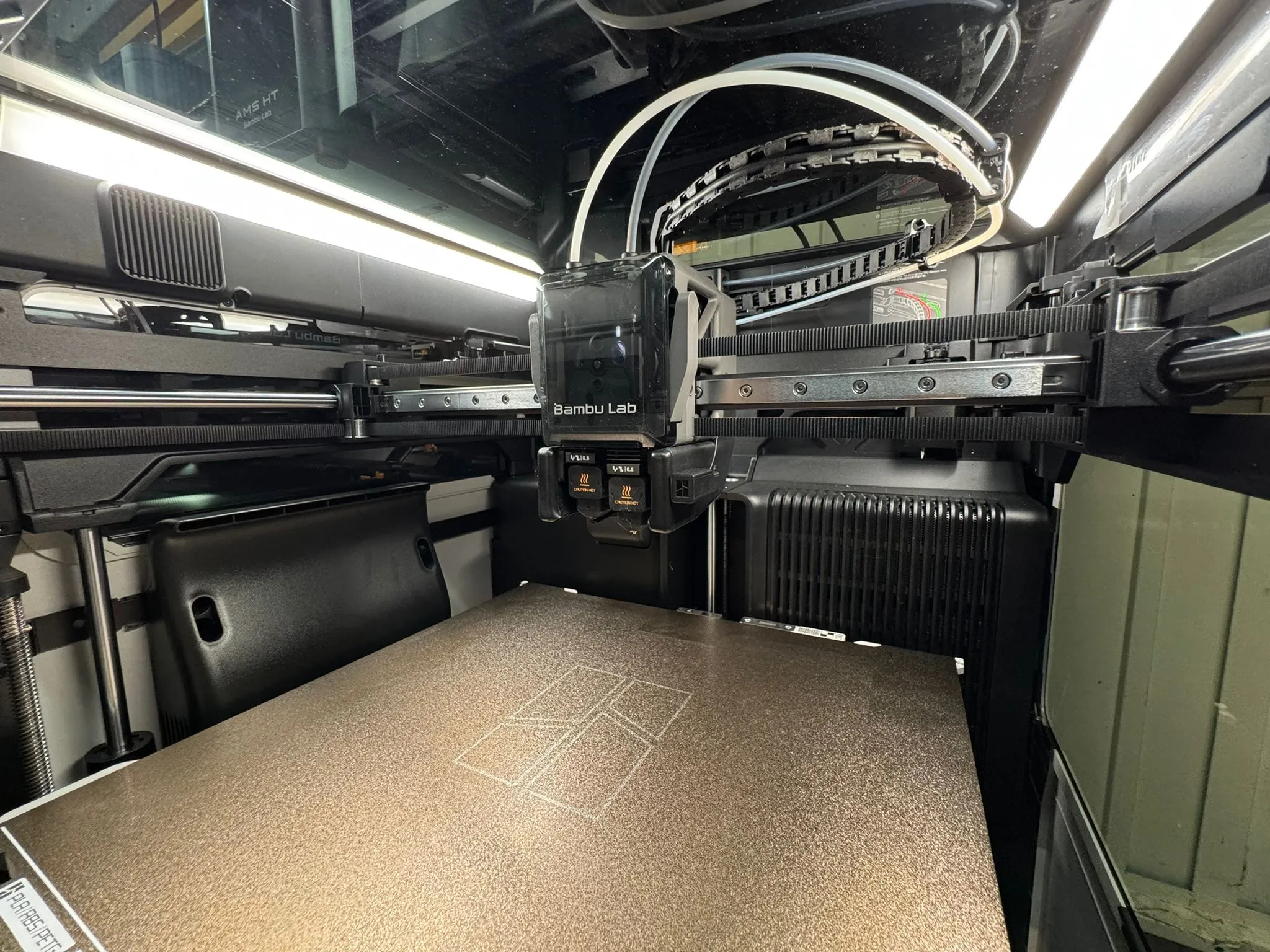
There's nothing complicated to do here, and Bambu Lab have really thought through these steps and made everything very straightforward. If you threw away the instructions and proceeded based purely on common sense, you'd almost certainly get to the same point - an assembled printer that is ready to power on - in a similar amount of time. It took around 30 minutes of relaxed assembly work to get from sealed box, to switching on, for the first time.
Plugging in the AMS HT and/or AMS Pro units takes another few minutes, and its worth double checking your work with regard to how to various Bowden tubes and data cables connect to the main printer hardware.
Once the setup is complete the H2D runs itself through a series of calibration checks, much like the other Bambu lab printers, and this takes another 30 minutes or so.
It is immediately noticeable during the setup process, that this is a far more substantial machine than the previous offerings from Bambu lab. Lifting this 3D printer from the floor, to a desk, is a serious undertaking, courtesy of the steel frame, and it has the look and feel of serious engineering hardware.
The dual nozzle printhead assembly, and the switching mechanism, are a thing of beauty. This is a very nerdy point to focus on I admit, and doesn't affect the utility of the machine at all, but it strongly reminds me of the exposed internal workings on an automatic skeleton watch.
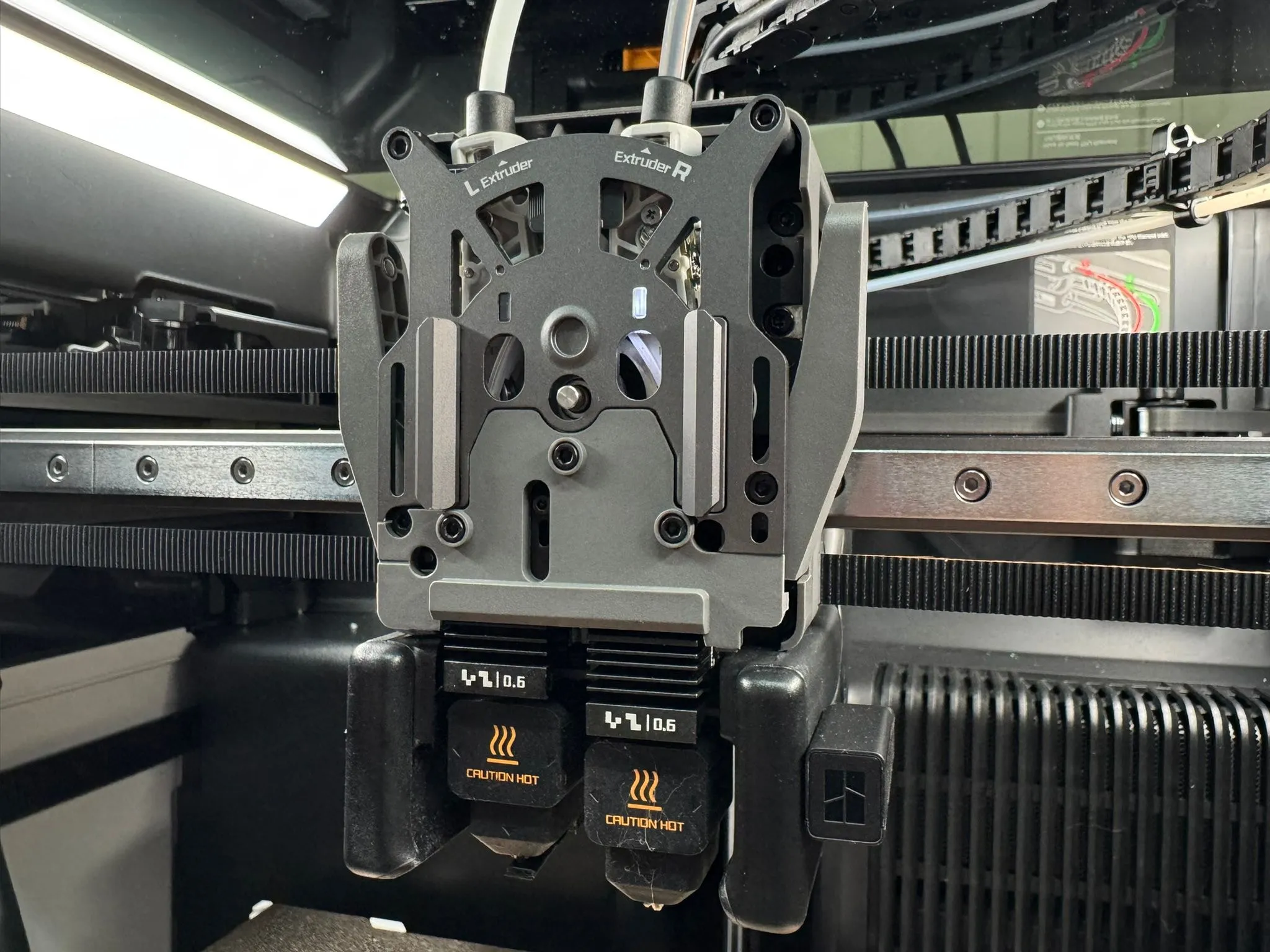
The build plate is a significant improvement on previous generations, in that it can be easily and quickly slotted into the correct place without much attention or effort. We have experienced multiple failed prints due to sloppy build plate placement whilst turning over both the P1S and A1, and so this is a welcome fix.
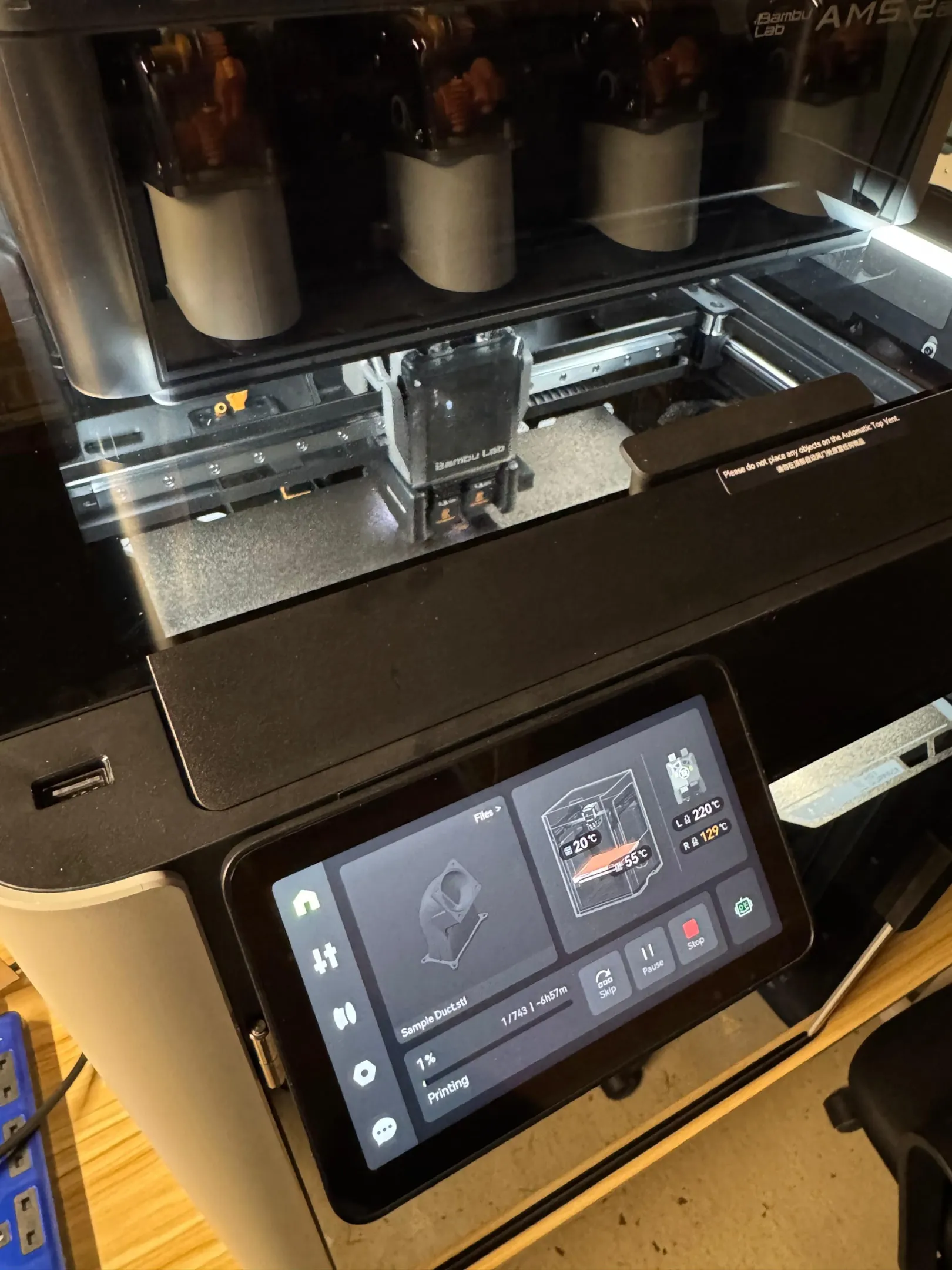
The screen interface is also excellent. Some users have criticized this for being 'too friendly' and 'cheerful' (you can blame Reddit users for these comments) but to us it has been essentially perfect. The P1S/P1P has a very basic interface, and the A1's touchscreen is notorious for being very slow/lagging. This is significantly better even than the X1C's excellent interface however, with a logical layout, extremely fast response time, whilst also being easy to adjust and read in all light conditions.
The Bambu lab H2D does seem to have some safety features that previous iterations did not. The inside of the chamber is made from exclusively flame retardant materials, and a 'flame sensor' informs users when any ignition is detected within the print volume. This can be connected to an optional CO₂ fire extinguishing system (although this doesn't seem to have been released yet).
The laser edition also features laser safety windows and an advanced air filtration system to keep the nasty stuff away from the user, as well as an emergency stop button. Having spoken with some contacts at universities in the United Kingdom, the general consensus seems to be that the safety features on the laser module are NOT sufficient to enable them to be used in an educational environment however... Whether that means that a typical hobby user, or user in a professional workplace would be safe is for you to interpret how you see fit.
As a 3D printing service company however, our focus was purely on the H2D as a machine for high volume 3D printing use. Print quality is a big part of that, and so we have spent the last few months extensively putting this machine through its paces.
The results? Absolutely outstanding.
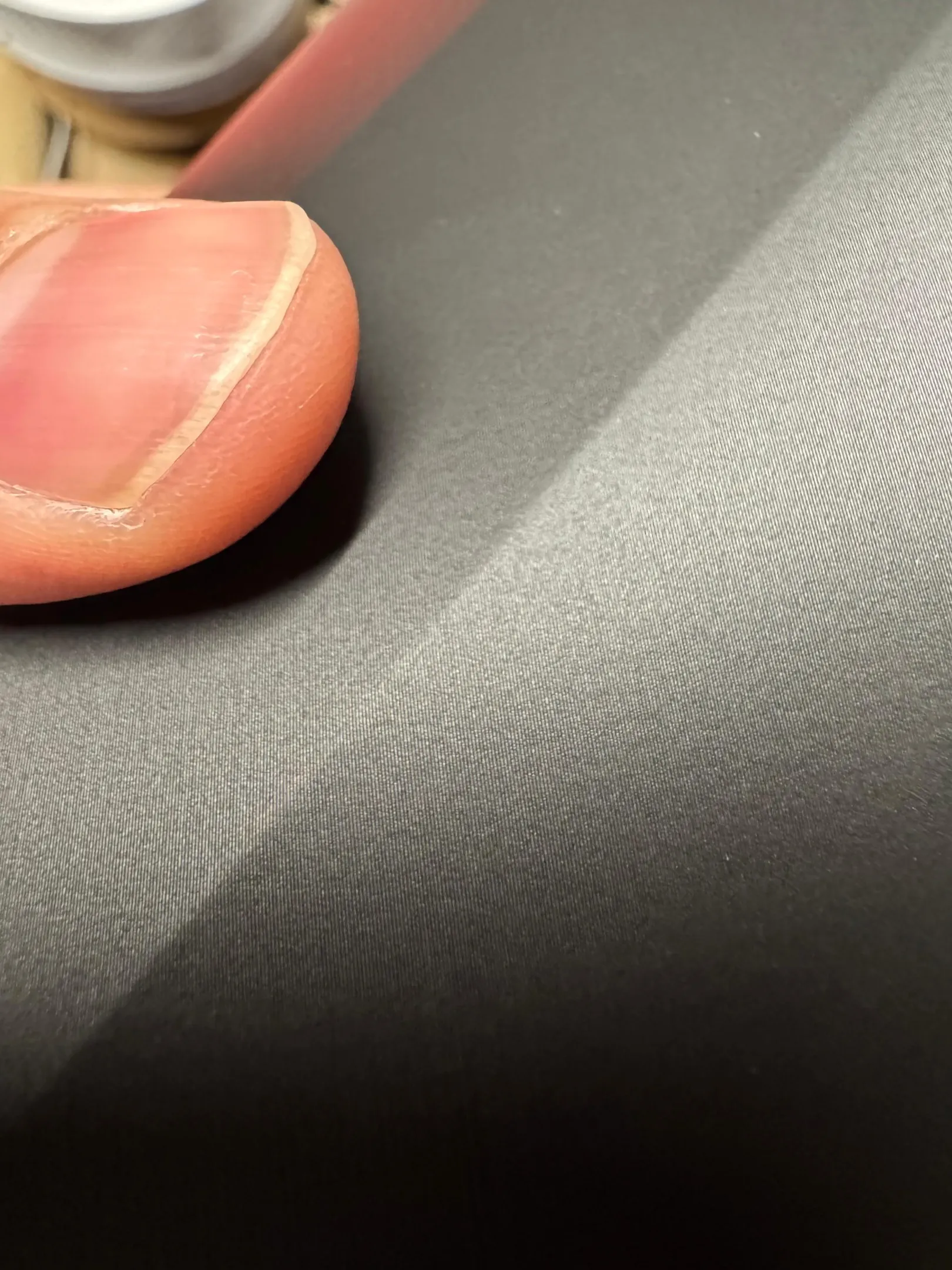
The print quality that we've seen has surpassed any of the other Bambu labs machines, which in turn surpass just about every other 3D printer on the market already. Layers are astonishingly even, and the finish is wonderfully consistent, especially with highly cosmetic materials such as PLA, ABS and PETG.
The dimensional accuracy of the machine also seems to be excellent, even on large flat test prints that are typically more of a challenge to print accurately. We have done about a dozen specific dimensional accuracy tests, alongside our normal QC testing for parts produced as part of our print service, and the H2D has flown through everything with flying colours.
Two nozzles means a slightly different workflow in Bambu Studio, where of course a specific filament has to be assigned to both the left nozzle and right nozzle respectively. This is all very intuitive, and users who are already familiar with Bambu Studio will have no issues. The dual nozzle setup does significantly reduce the amount of filament waste on most multifilament printing, but be aware that if a single print has three or more colours then there will still be significant purging required to change materials.
The general software to hardware workflow is very good for the most part. The Bambu lab H2D is a little more 'closed off' than previous versions, in that the software generally won't let you start a print unless it is 100% happy that everything is setup perfectly. This means the right filament, in the right nozzle, at the right nozzle size, with door closed, bed clear, etc. This is very useful as a sanity check for most users, but is also quite annoying upon occasion, such as when a nozzle size has been changed physically, but not logged on the onboard computer. I have had to walk back to the printer many times to change the installed nozzle on the onboard computer before I could run a print.

The workflow is also highly geared towards use of the AMS units. When slicing, users are encouraged to sync the machine filaments with the software, which is a very slick and useful system, but does require the AMS to be installed to be effective.
The Bambu 'Handy' app remains outstanding, and access to the onboard camera and AMS units settings on your phone is extremely useful when moving around a busy workshop.
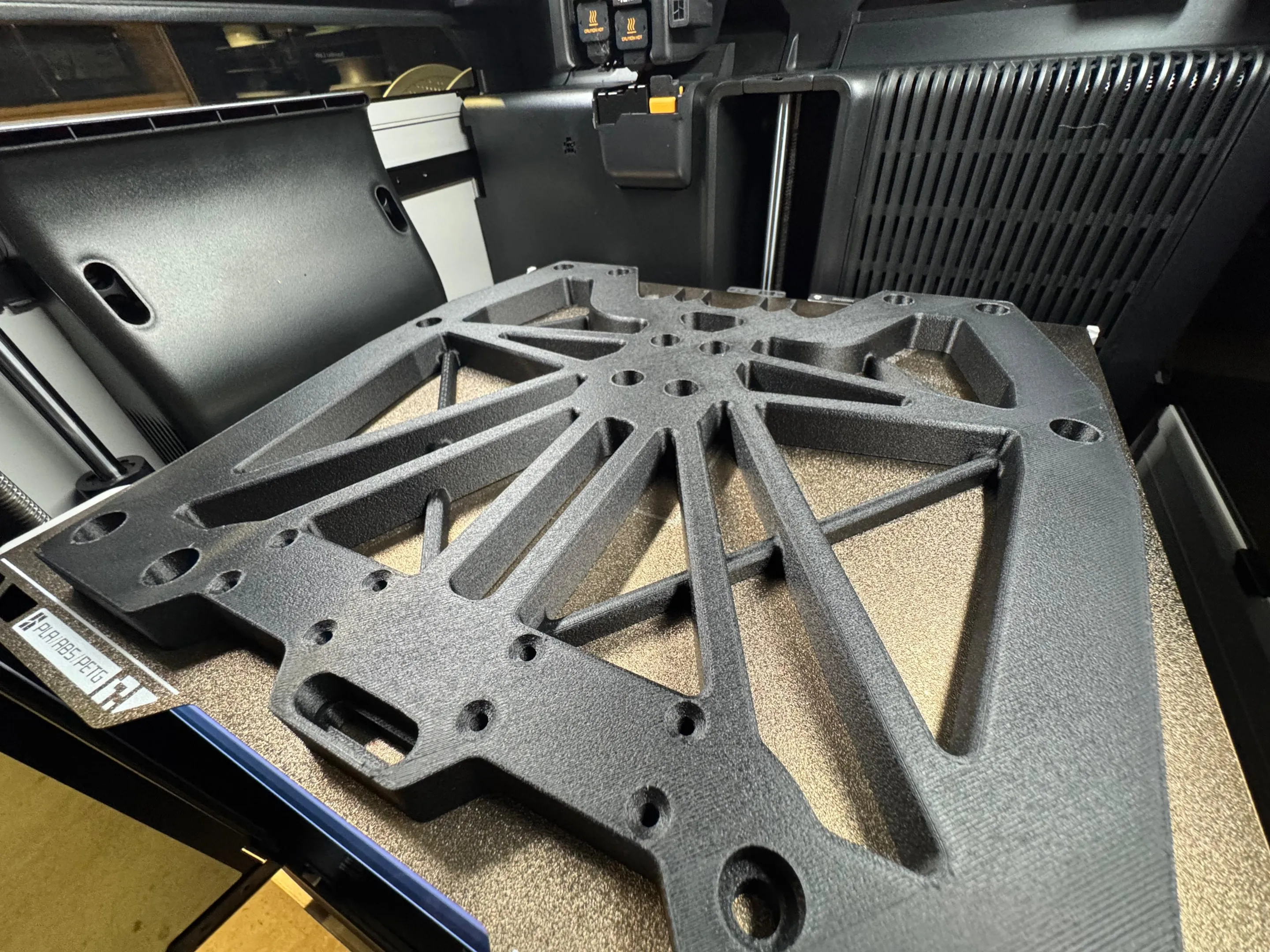
I remain less than convinced by some of the AI features. In theory a scattering of cameras, sensors, and AI-enabled software features detects debris, identifies print issues, and ensures that issues are picked up and identified near instantly. In our experience, these features don't really work well, and we had multiple instances where 'false alarms' caused a print to pause overnight for no reason. We also have had multiple instances where actual build failures went completely unnoticed by the nozzle camera, so we have since turned those features off.
As you may have already gathered from my comments earlier in this piece, I believe that the addition of the laser cutter to the H2D is a big mistake. There are a few reasons why I think this:
As I previously mentioned, the first company to have a crack at the all-in-one, changeable tool head machine was Snapmaker. I backed the Snapmaker 2.0 Kickstarter campaign way back in 2019, and had a lot of fun tinkering with the various modules. The trouble is, that after the obligatory test models for the laser module and CNC tool head, they weren't ever used again. It's a big hassle to change over the tool head for each, and realistically, I simply went over to the dedicated laser cutter and used that.
While Bambu lab have gone to great lengths to reassure users that the laser fumes won't gum up the motion mechanisms inside the H2D, I am less than convinced. Anyone who has spent some time cutting wood and acrylic on a laser cutter will be familiar with the unmistakable sticky residue that builds up everywhere inside the machine - even with industrial grade extraction built in. On a 3D printer, this would be a death knell for the machine's reliability.
Most importantly though, this feature just isn't a good fit for either the Bambu Lab H2D's theoretical target users (cosplayers, tinkerers, home/hobby users) or their actual users (small businesses, freelance designers, R&D labs). In all of the use cases that these buyers will have, the laser cutter is either too small, too weak, too expensive, too noxious, or too dangerous to be useful.
The laser module is also being sold as an upgrade kit now, which seems like it would create even more safety issues, as missed installation steps or user error during the upgrade could easily put people at risk from what is a fairly serious 40W laser.
It's well worth noting too, incidentally, that Snapmaker's latest two releases have been for dedicated and entirely separate laser cutter and 3D printing machines. So perhaps they, at least, have learned their lesson. An all-in-one solution sounds great on paper but is not very useful in reality.
It does at least seem that the 3D printing performance of the H2D has not been affected by any compromises made in order to integrate the laser module. Dr Tao goes to great lengths to reassure viewers in this interview with CNC Kitchen that this is true, and based on our performance testing of the machine I fully believe this to be the case. The H2D is a 3D printer first and foremost.
With that negative note on the laser aside, its worth returning our focus to the 3D printing performance of the H2D.
The H2D's performance when printing the classic 3D printing staples of PLA, PETG and ABS is essentially flawless. I'm also including the popular PLA-CF, ABS-GF and PETG-CF materials from Bambu lab as 'standard' for this purpose, as they are very much designed to run as efficiently as their non-composite counterparts in the Bambu Lab ecosystem.
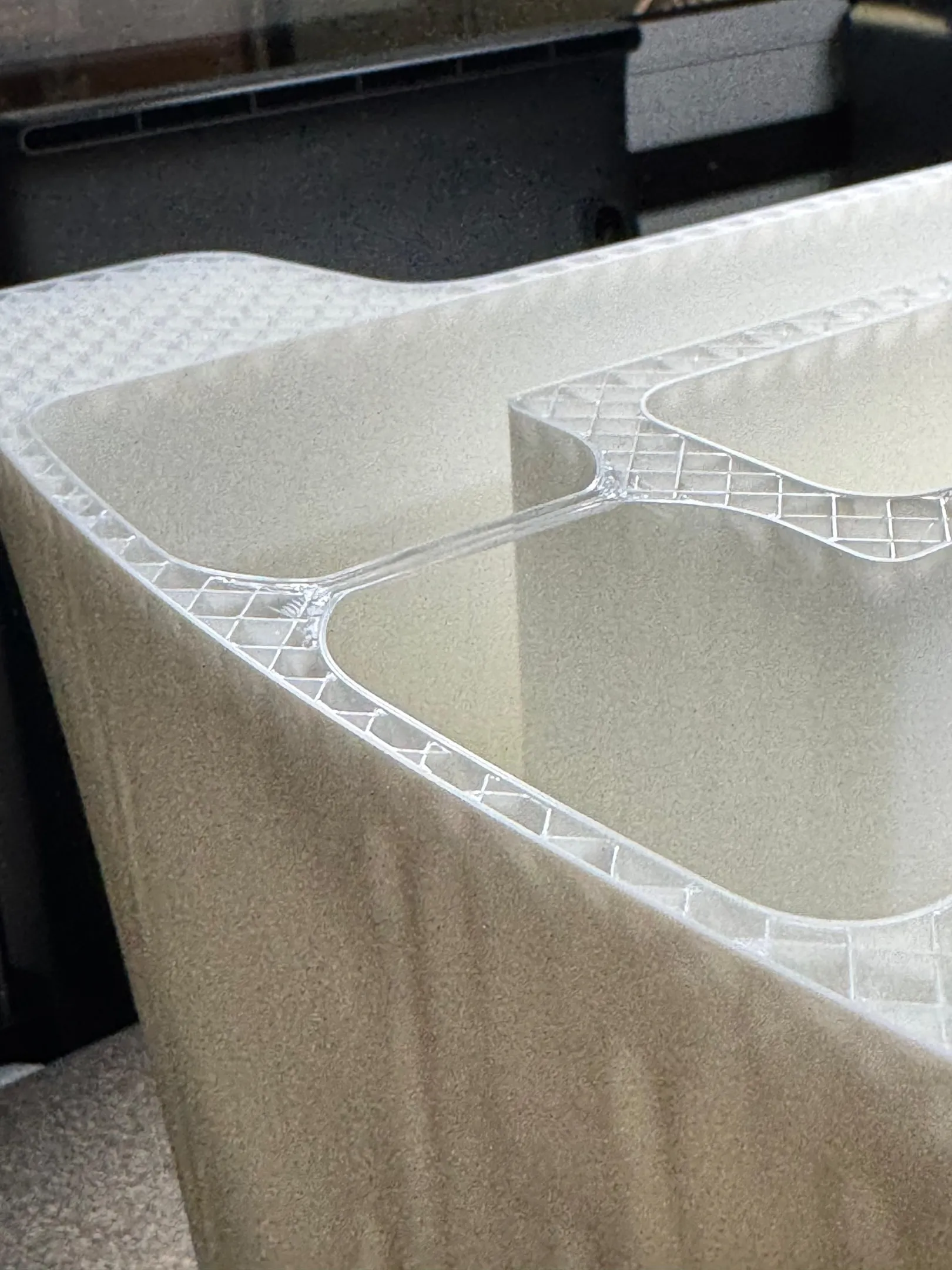
As far as I can recall (we've run these machines for about 1500 hours at the time of writing) we haven't had a single print failure using one of these materials, and have noticed essentially zero visible warping when printing with ABS filaments.
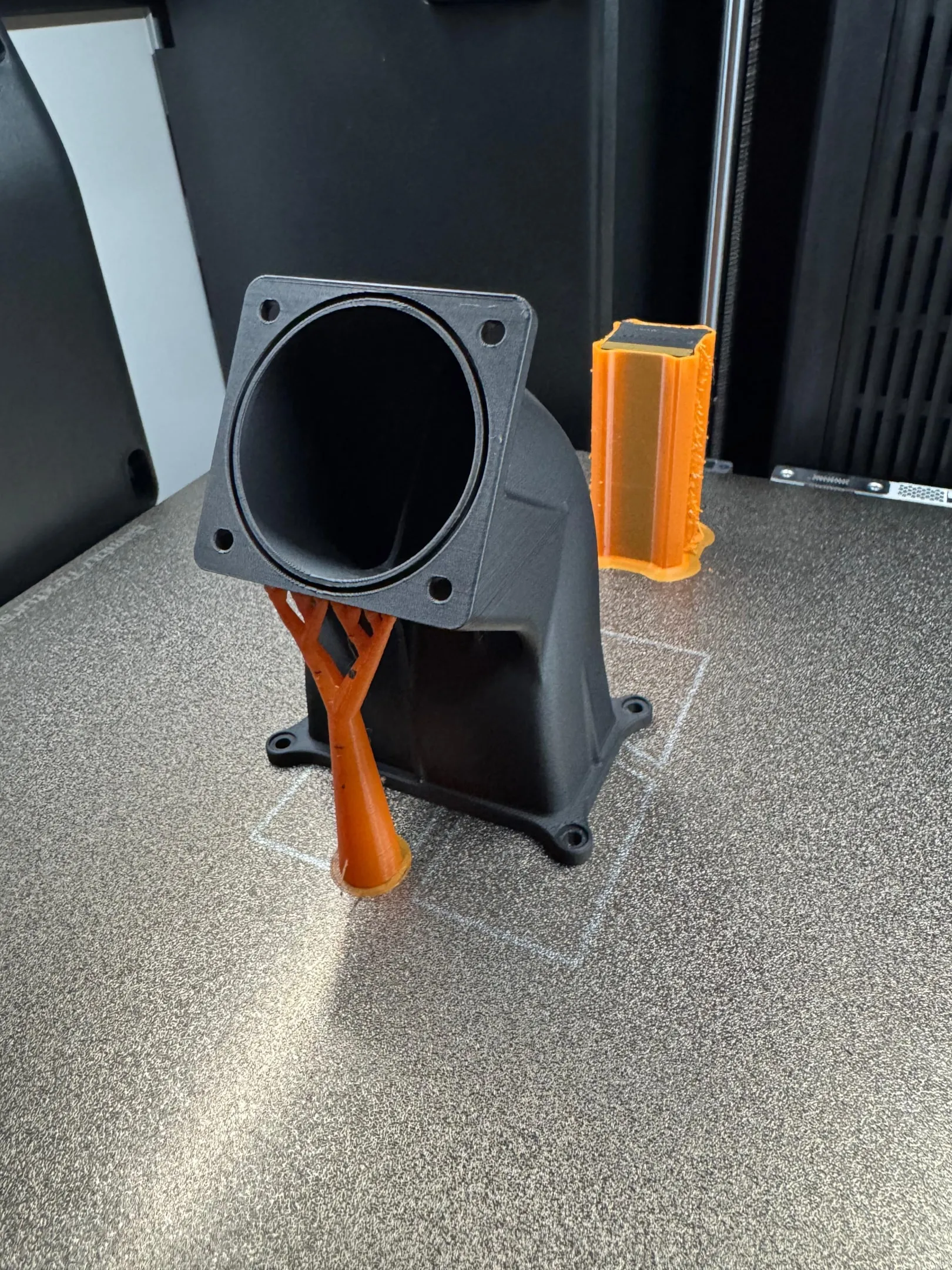
One important caveat here, is that we always dry our filament fully before use, and also use the Bambu lab brand of filament for 95% or more of our printing. The manufacturer spends many tens of thousands of hours optimising their machines to run perfectly with their own-brand filament, so we like to take advantage of all that additional tuning, even at the expense of a few %age points of profit for us. Bambu lab filament is actually very well priced anyway, compared to options from the likes of UltiMaker or Markforged.
So far we have tested PC-FR, various Nylons such as PPA-CF, ASA and ASA-CF, PET-CF and support materials such as PVA and Support for PA/PET. I would class these materials as advanced because they are far less forgiving of poor design choices than the 'standard' materials, and are far more prone to warping and moisture absorption having a severe effect on the print quality.
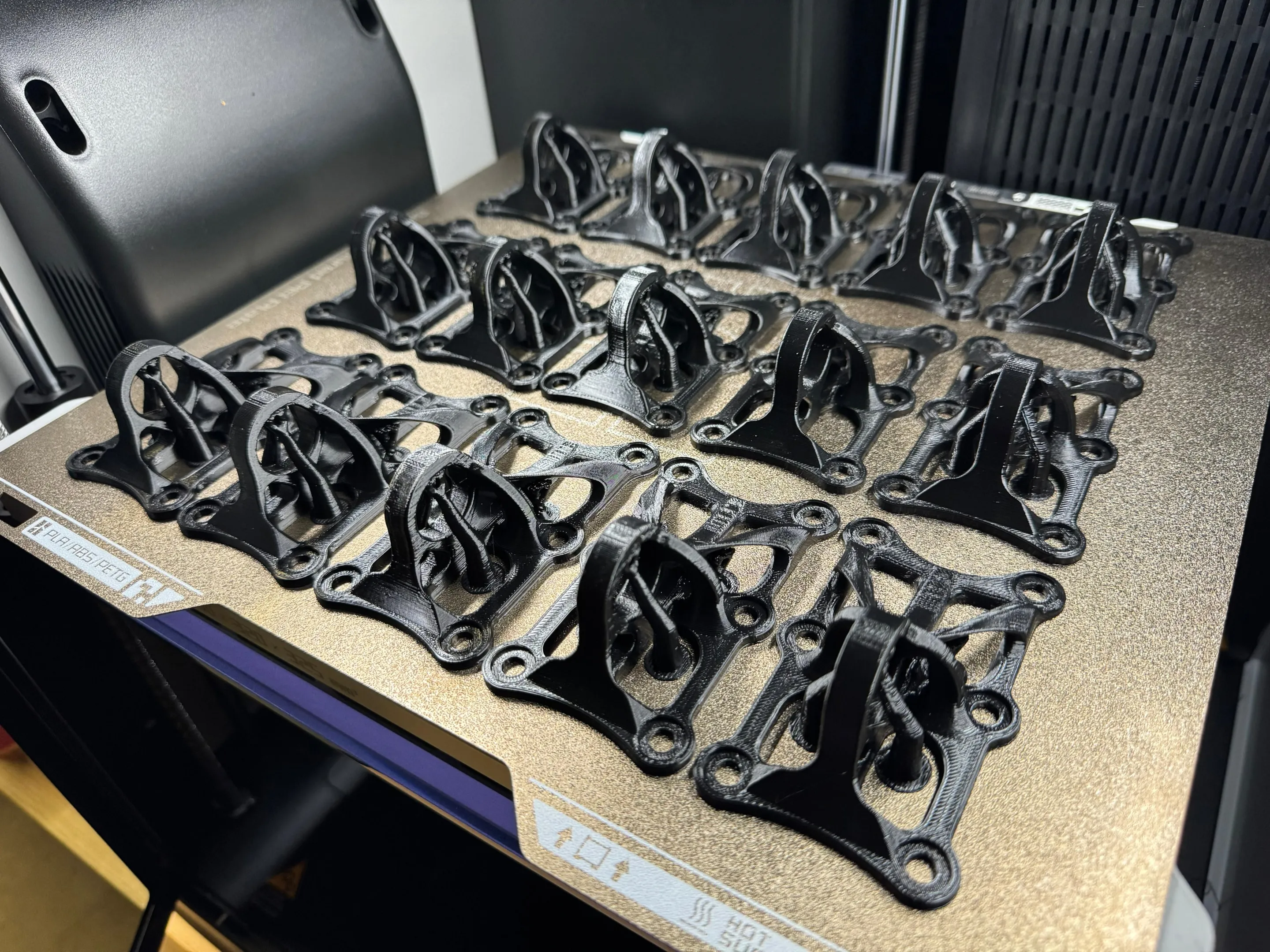
In short, the Bambu Lab H2D performed very well when printing all of these specialist materials, certainly when compared to printing them on the X1C or other previous machines. The main reason for this is the actively heated chamber, which gives a much more stable ambient temperature when printing.
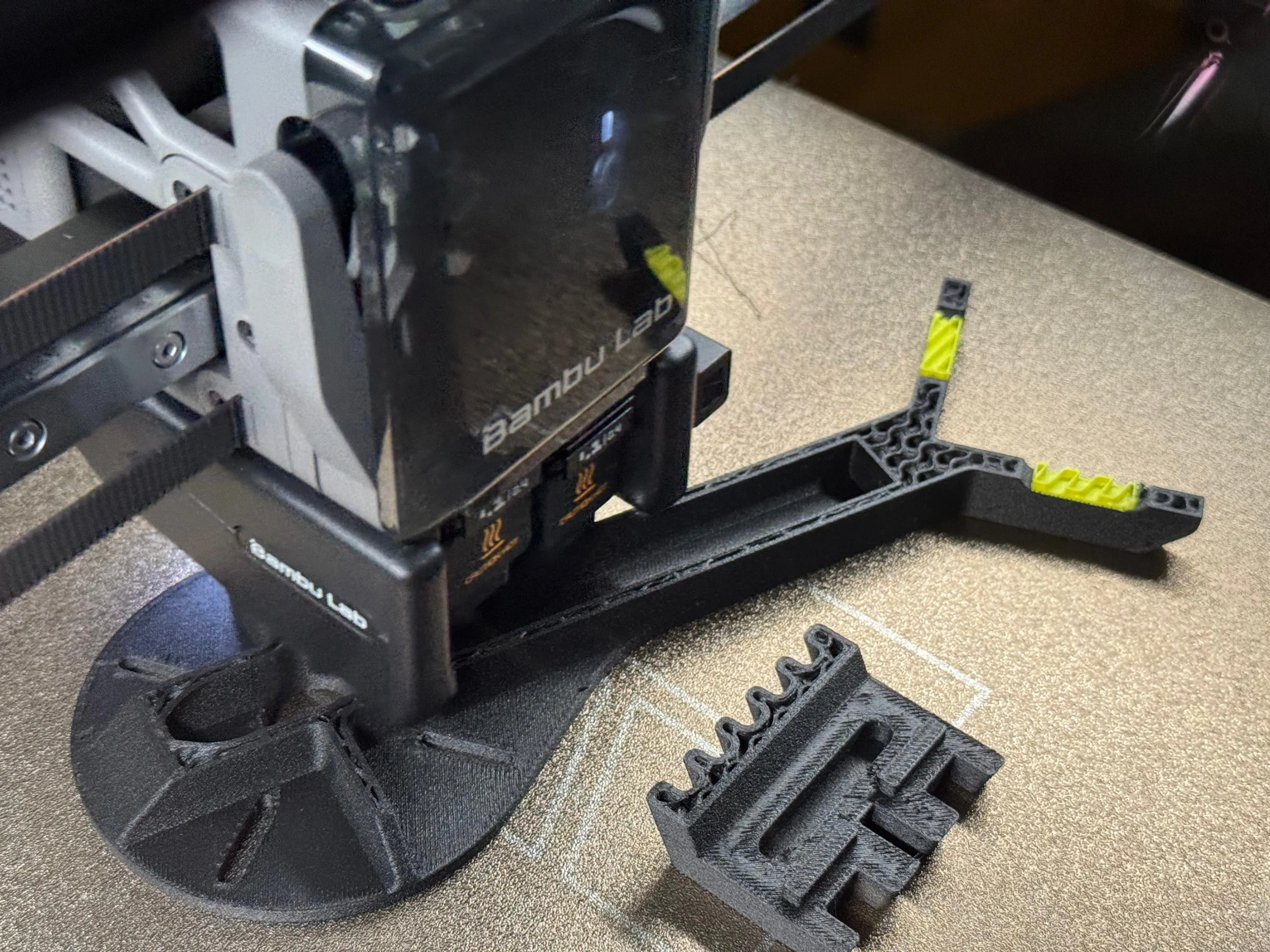
On the negative side, several of the materials, such as PPA-CF, are not compatible with the AMS system. This is quite irritating, as while the filament drying capability of the AMS-HT in particular is excellent, you then have to take the filament out of that wonderfully dry environment to actually print anything. As experienced users of nylon filaments know, even a couple of hours of exposure to regular (non-dry) air significantly degrades the print quality, so a good solution to this within the Bambu ecosystem of products would be welcome.
TPU printing is an art unto itself, and as many of the example models showcased on the Bambu Lab H2D showreels and marketing videos have a TPU component, we were excited to see how well it worked.
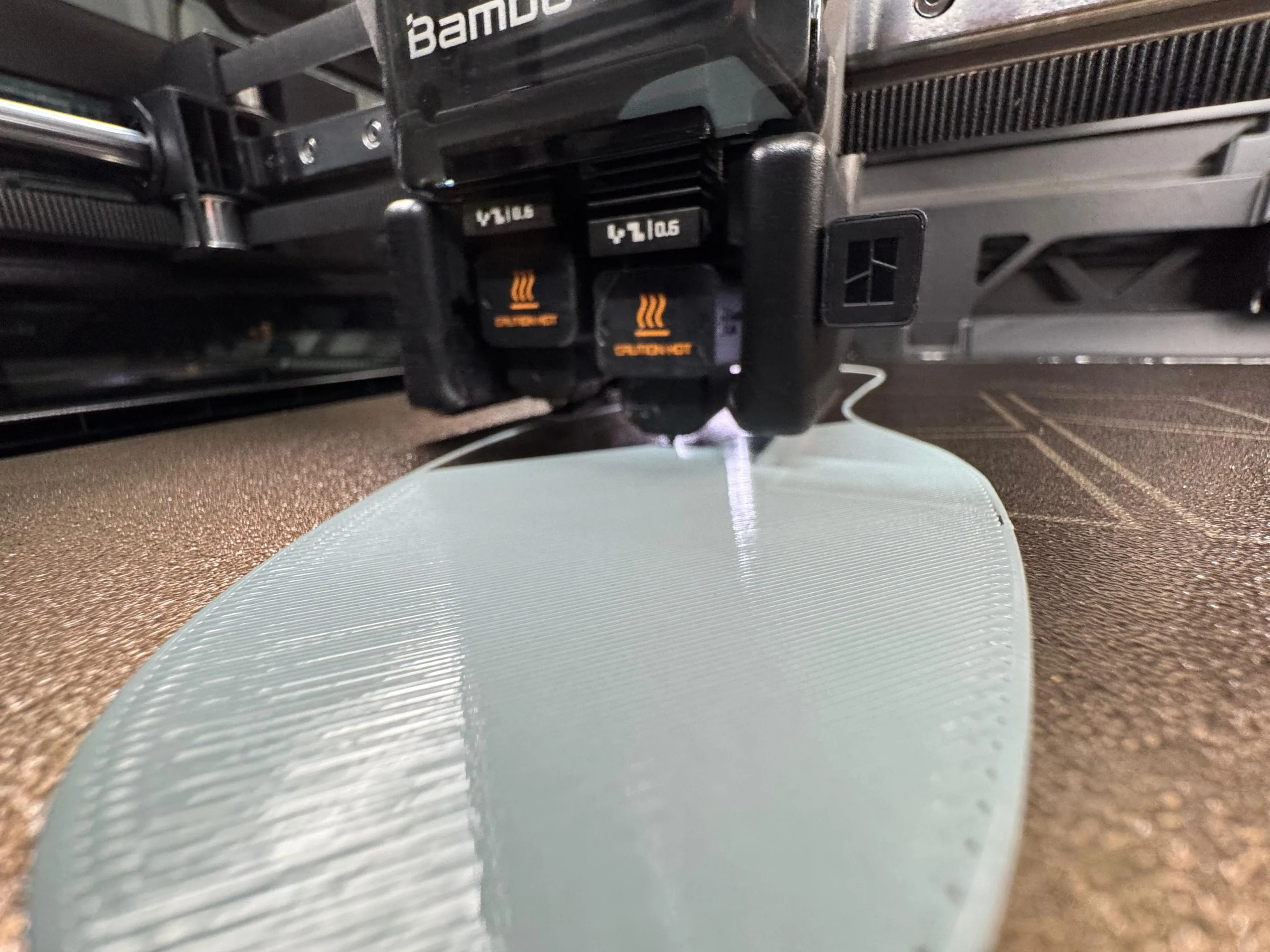
The new Bambu lab TPU 90A, and TPU 85A are excellent additions to the flexible material lineup. It is possible to print both of these very effectively on the H2D, but it is worth noting that an entirely different filament feeding setup is required for good results, which takes a bit of time to set up.
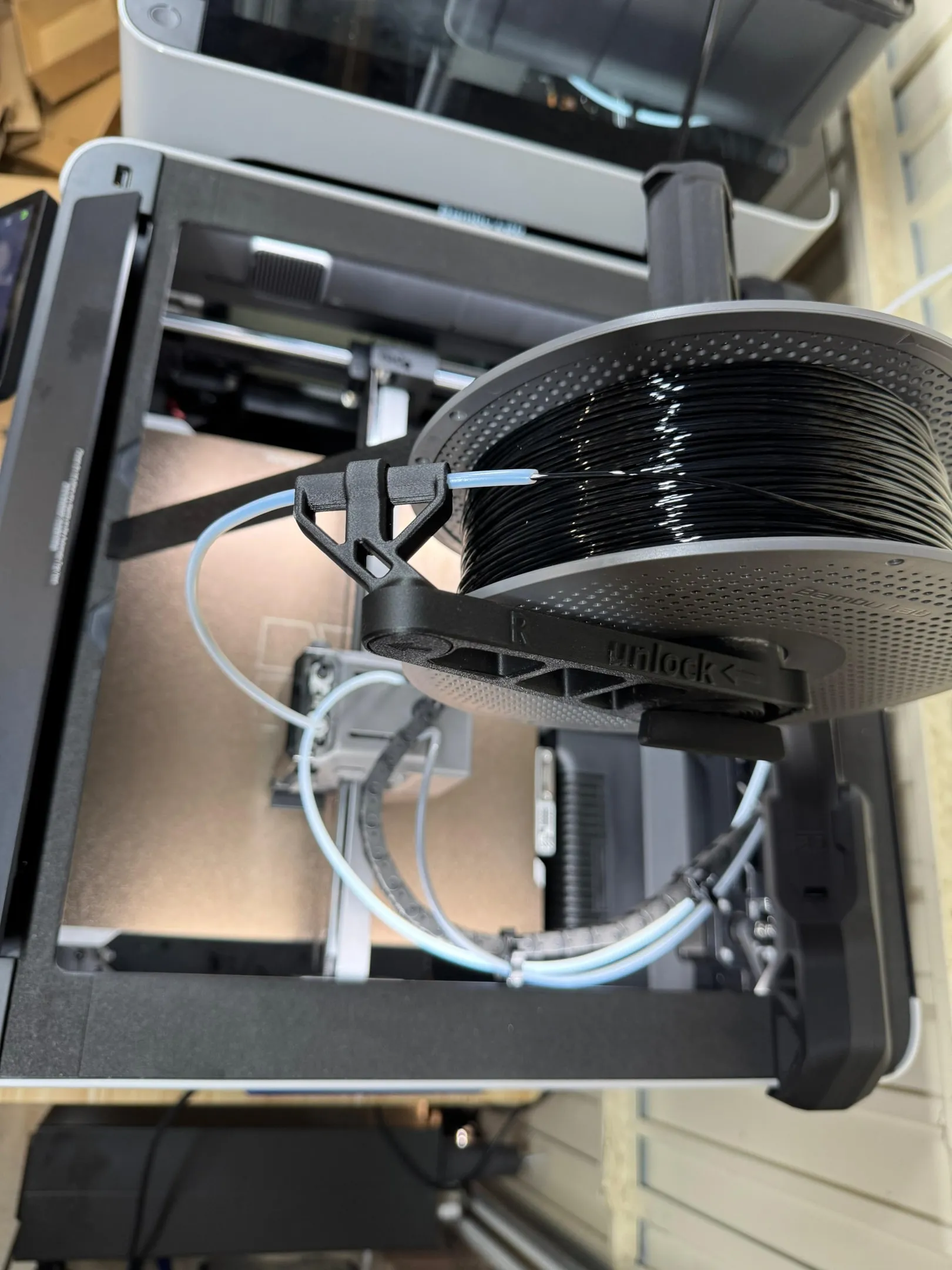
The surface quality and consistency for the TPU parts that do some off the machine, assuming that you spend the same to set up and dry the filament perfectly, is essentially flawless however. We had an average of one print failure in every five attempts throughout our testing, which is fairly high, but some of the models that were attempted were very challenging, and would not necessarily have worked on competitor machines either.
Importantly, the Bambu Lab H2D is significantly better than the other machines in the Bambu suite of printers, so if TPU printing is important to you then the H2D is a great choice.
The Bambu Lab H2D comes with a variety of options for accessories, additional extras, and upgrades. These are the ones that matter:
The high temperature version of the AMS unit is an excellent addition to the ecosystem and well worth the money. This unit can reach temperatures of 85°C to dry advanced filaments (don't put your PLA in here or you'll come back to a sticky mess!) and keep them dry until they are ready to be used.
Verdict: Superb, don't think twice.
This is also an outstanding bit of kit, and a worthy improvement on the (already excellent) original AMS unit. The main benefits are a slightly more rugged and sturdy construction, better debugging and disassembly in the event of filament jams, and a heater that allows filament drying up to 65°C in-situ. Some users have complained that the filament drying can't be used while printing from the AMS, but a little thought about how materials soften when warm, and the likelihood of them getting stuck would inevitably skyrocket, quickly explains why.
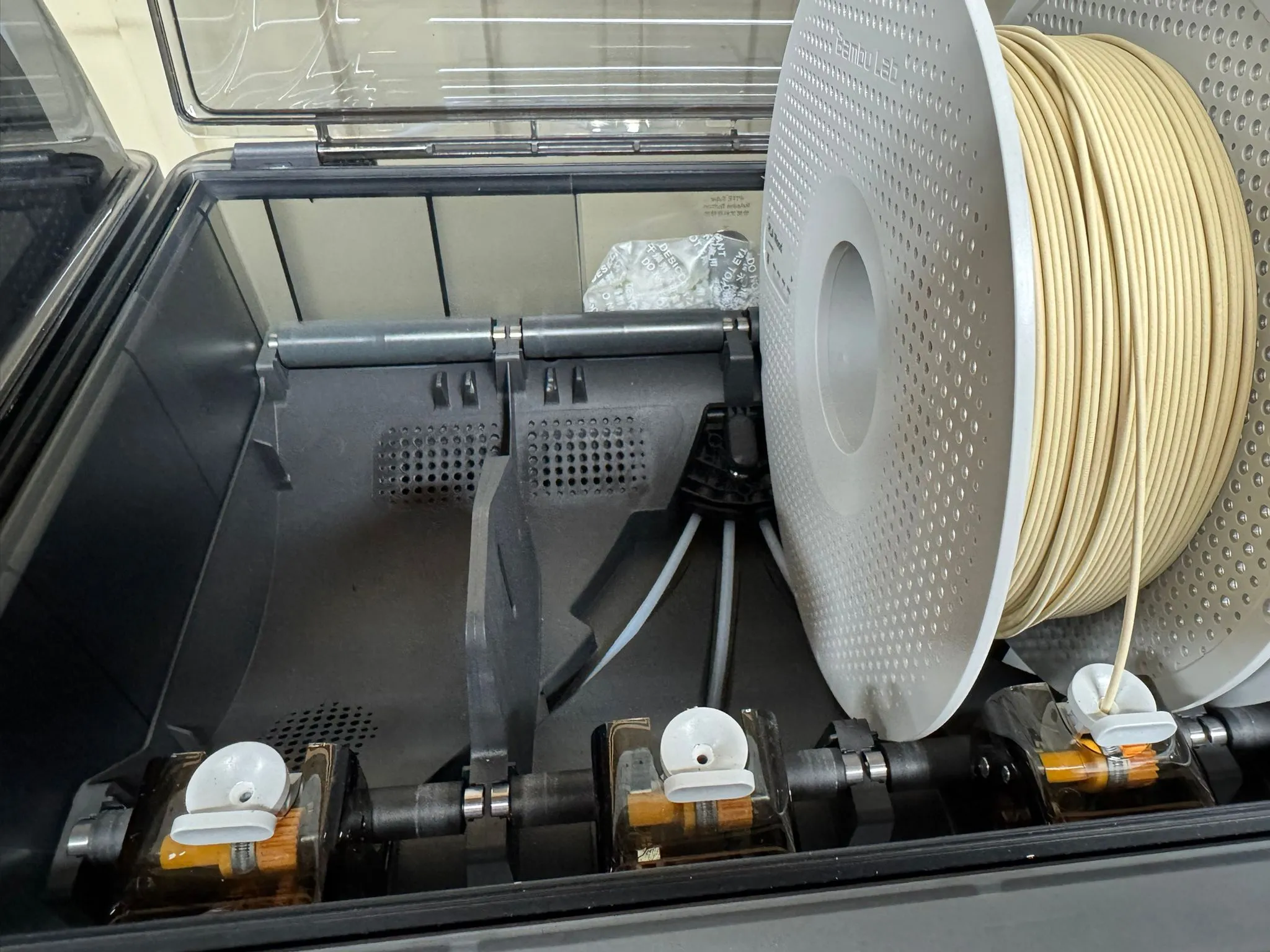
Verdict: An excellent accessory, well worth the money.
A slightly weird add-on purchase that is available for the H-series printers, the Vision Encoder Plate is designed to 'enhance motion accuracy to below 50μm'. We bought one, and have dutifully used it to run the calibration on one of our three machines, but not the others.
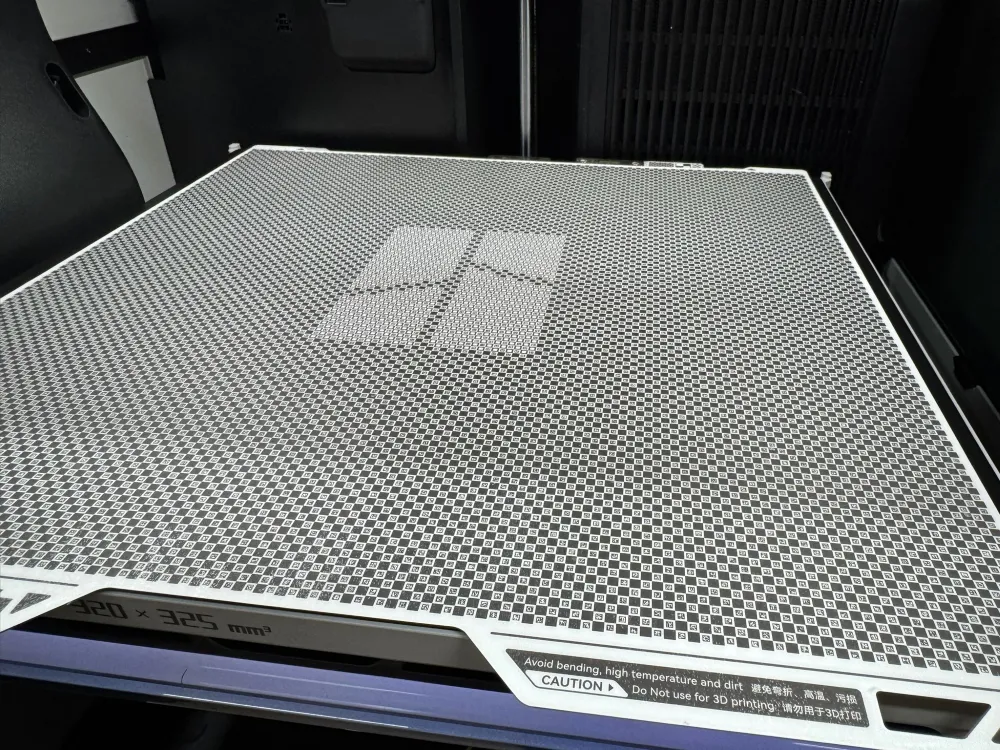
Did it work? Honestly, no idea. We haven't been able to detect a meaningful difference in quality or accuracy between the various H2D's that we run, so perhaps the effect, if present, is too small to be noticed. On the other hand, an extra £80 isn't scandalously expensive on a £1800 3D printer, so if it does improve things a bit, then why not go for it?
Verdict: Flip a coin? Buy it, or go for a nice lunch somewhere. Your choice.
The HF (high flow) series of nozzles are advertised to offer an increase in material flow rate of 62.5% and a reduction in print time of up to 30%. We've used the 0.4mm version, and this seems plausible, without any noticeable difference in quality. As I'm writing, Bambu lab have just released the 0.6mm and 0.8mm versions of the HF nozzles, and we've ordered couple of sets of each without much thought.
For around £90 for a set (you need to install two identical nozzles to operate the printer, even if you're only using one material, which is slightly annoying) this is a no-brainer for us as a 3D printing service. For that elusive hobby user who runs a H2D in their back bedroom? Perhaps less useful; I'd probably just wait a bit longer for my print to finish.
Verdict: Excellent if you care about optimising speed as much as possible without sacrificing quality.
Overall, we've been hugely impressed with the Bambu Lab H2D overall. The print quality is second-to-none, it can handle exotic materials with ease, and both single nozzle printing and dual nozzle printing workflows are intuitive, with accurate results.

I would argue that the product management was lacking on this machine, and that it doesn't really match what Bambu lab users actually wanted. The laser edition seems like an unnecessary option, as both the laser cutting and pen plotter features are done better by dedicated machines already on the market.
That said, what they have managed to produce is a fantastic offering for the thousands of small businesses, professionals, and freelancers that are currently using Bambu machines. The additional build volume, alongside the spectacular reliability and printing experience that they are already known for makes the H2D a steal for under £2000.
We are already running the three units that we have so far nearly 24/7 making parts for customers, and have found the additional confidence when starting a print in ABS, or PC, a real benefit. That heated build chamber is very stable, and really makes a big difference with the high temperature filaments.
When comparing the H2D to other offers out there by the likes of UltiMaker, Raise 3D, BCN3D, and even Markforged desktop machines, there really is very little competition. The H2D's performance outstrips the UltiMaker S8 comfortably for example, and yet costs six times less. I really can't see how the likes of UltiMaker will be able to stay in business for much longer, and having spoken to various resellers that cover both the UltiMaker and Bambu labs brands, I am certainly not alone in this judgement.
The really interesting question is how much extra performance you get from a machine such as the Stratasys F-series printers. Long a symbol in the 3D printing industry of high quality, reliable, and professional 3D printing, I have spoken to various contacts who own these alongside Bambu lab options who have no plans to renew the expensive service contracts that Stratasys are famous for, as their F-series sits unused. Considering that you could own a dozen or more H2D's for the same price as an F-series, each of which would have a bigger build volume, and produce parts with a superior surface finish, its very hard to see where the benefit of these legacy behemoths lies.
Finally, just as I was putting the finishing touches to this review, Bambu labs decided to announce the H2S - a new stripped down version of the H2D. The difference lies in the number of nozzles, one instead of two, and a slightly large usable build volume.
This now sits alongside the H2D Pro series, announced a few weeks ago. The H2D Pro is essentially identical to the H2D, but with closer control over network connectivity - essential for certain regulated industries. It also has a slightly different tungsten carbide nozzle.
The H2D Pro is significantly more expensive, so unless you are buying on behalf of one of those regulated industries, you would be absolutely insane to buy this over the H2D or H2S machines. They are essentially identical hardware, and so the 'WPA2-Enterprise Wi-Fi Authentication' and physical network kill switch will set you back an additional £1300.
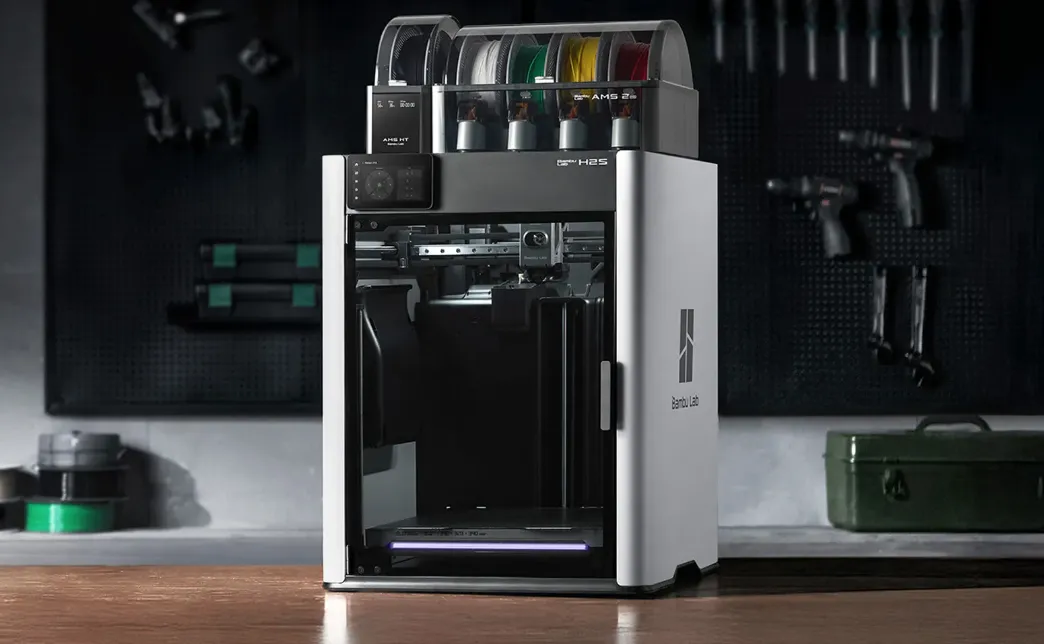
The H2S, on the other hand, looks like an incredibly good value option. The majority of the time, two nozzles are not needed for most industrial and professional 3D printing, so we will be buying several of these machines to complement our H2Ds. At under £1000 (for the option with no AMS) I'm entirely confident that this will be the single best value 3D printer on the market in 2025/26.